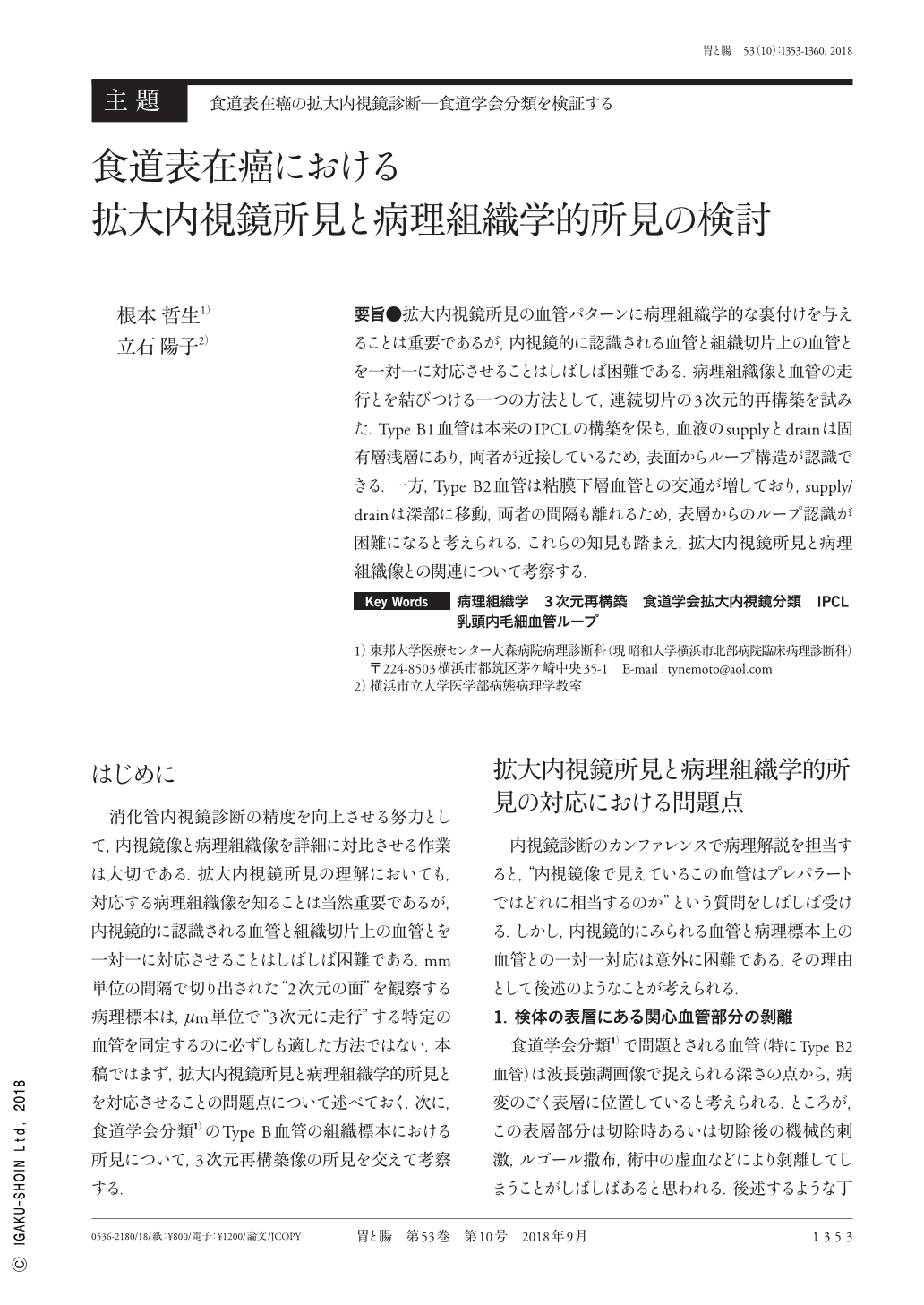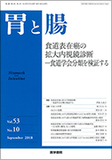Japanese
English
- 有料閲覧
- Abstract 文献概要
- 1ページ目 Look Inside
- 参考文献 Reference
- サイト内被引用 Cited by
要旨●拡大内視鏡所見の血管パターンに病理組織学的な裏付けを与えることは重要であるが,内視鏡的に認識される血管と組織切片上の血管とを一対一に対応させることはしばしば困難である.病理組織像と血管の走行とを結びつける一つの方法として,連続切片の3次元的再構築を試みた.Type B1血管は本来のIPCLの構築を保ち,血液のsupplyとdrainは固有層浅層にあり,両者が近接しているため,表面からループ構造が認識できる.一方,Type B2血管は粘膜下層血管との交通が増しており,supply/drainは深部に移動,両者の間隔も離れるため,表層からのループ認識が困難になると考えられる.これらの知見も踏まえ,拡大内視鏡所見と病理組織像との関連について考察する.
Although it is important to provide histopathological support to the vascular pattern of magnifying endoscopic classification, it is often difficult to establish a one-to-one correlation between a blood vessel recognized endoscopically and that recognized on a tissue section. We employed three-dimensional reconstruction of serial sections as a solution for correlating the histological image and endoscopic pattern of blood vessels. Type B1 vessels preserve the original IPCL(intra-epithelial papillary capillary loop)structure, with the blood supply and drain being proximally close to each other and located in the shallow layers of the lamina propria ; thus, the loop structure can be easily recognized endoscopically. Conversely, in type B2 and B3 vessels, the original IPCL structure and subepithelial vessels are damaged with an increased connectivity to the submucosal blood vessels, enabling blood supply and drain to the deep part. Additionally, the distance between them is increased, making it difficult for the loop to be recognized from the surface. Based on these findings, we considered the existence of an association between the magnifying endoscopic and histopathological findings.

Copyright © 2018, Igaku-Shoin Ltd. All rights reserved.


